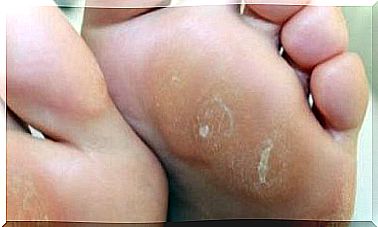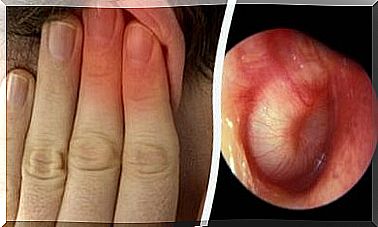Shortened Frenulum In Infants: Symptoms And Treatment

All humans have tissue that connects the lip to the gums called the frenulum. However, some infants may experience a very stiff and shortened frenulum, causing abnormalities and various complications. Do you want to know what the problem is? Continue reading.
The frenulum can undergo many anatomical changes. Most of these defects are congenital, so very often they can be found in a child. Of all the malformations that can develop in the oropharynx, the shortened frenulum is one of the rarest . According to research, it accounts for 9.2% of all irregularities.
A shortened frenulum in infants is most often found on the upper lip and can cause various problems. This anatomical anomaly causes the appearance of phonetic disturbances and the separation of the incisors.
Why is a shortened frenulum formed?
At birth, the frenulum of the upper lip is shallow. This means that in all newborns it is short and fat. Various studies show that in the first months of life, you should develop normally and grow to 1 to 2 millimeters. Thus, a shortened frenulum in infants appears when this growth is absent.
So far, no specific cause has been identified that could explain the occurrence of this anomaly. As it is a congenital malformation, it is known to occur in utero in utero. It cannot be determined, however, whether this is due to genetics or some harmful factor.
One of the most accepted theories about the shortened frenulum of the lip explains it by a mutation in the MTHFR gene, the same gene that is involved in cleft lip. However, more research is needed in this area.

Symptoms of a shortened frenulum in infants
The presence of a shortened lip frenulum in newborns can be difficult to identify as it only gives subtle symptoms. Therefore, be vigilant if your child presents any of the following problems:
- Difficulty sucking and breathing while breastfeeding.
- A clicking sound made while eating.
- Slow weight gain and frequent hunger.
- Constant fatigue and drowsiness during lactation.
- The presence of colic.
In the most severe cases, a shortened frenulum can make it difficult for the upper lip to move and the baby will have poor suction. As a result, the breastfeeding mother has various symptoms, among which the following stand out:
- Feeling of breast swelling or incomplete emptying, even after breastfeeding.
- Discomfort and pain during or after breastfeeding.
- The presence of mammary gland lumps caused by blockage of the milk ducts.
- Mastoiditis.
How to feed a child with a shortened frenulum?
A shortened frenulum in infants can make feeding them much more difficult, especially if they are breastfed. This is because your little one will have to put in more effort to suckle in order for the milk to flow out of the breast. This extra effort will make your baby feel more tired and sleepy.
In such cases, it is recommended to use a bottle if so indicated by the pediatrician. It can be filled with breast milk or infant formula.
On the other hand, if you want to continue breastfeeding, you can use a variety of suckling aids. For this purpose, you can massage the breasts and apply warm water compresses before feeding to increase the flow of milk a. It is also worth paying attention to the proper technique of breastfeeding.
Complications that can be caused by a shortened frenulum
The most common complication of a shortened frenulum in infants is malnutrition. In turn, inadequate nutrition can make your baby underweight and slow growth. Keep in mind that a newborn baby has greater nutritional requirements in the first few months of life.
In very severe cases, the shortened frenulum can be inserted directly into the upper palate, thus preventing the lips from moving properly. Consequently, problems with phonation arise, causing dysarthria.
On the other hand, this change in the attachment of the frenulum also causes diastema, i.e. an increase in the separation of the teeth. The upper incisors are most often affected.

Treatments applied to the shortened frenulum
Depending on the severity of the situation, there are different treatment options your doctor may use to reverse the shortened frenulum at an early age. Treatments include manual exercises following surgical resection of the frenulum. The most commonly used techniques are:
- Manual release: this measure is indicated in mild cases of shortened frenulum as the least invasive and painful. This technique involves parents performing basic finger exercises to stretch the frenulum and reverse the situation.
- Frenulectomy: This surgical procedure is necessary in the most severe cases of shortened frenulum in infants. It involves the surgical removal of the frenulum, which is usually performed with a laser, without the need for sutures. The procedure is performed quickly in a doctor’s office.
Early detection is essential
A shortened frenulum in infants is an anomaly that is difficult to detect at first. This is because everyone is born with a relatively short frenulum. Therefore, you should be very careful when feeding your baby and make sure he sucks properly.
Early detection and treatment of the disorder is essential to prevent complications, especially malnutrition. When a baby does not receive the necessary nutrients in the first few months of life, he or she may suffer from dwarfism that is difficult to reverse later.









